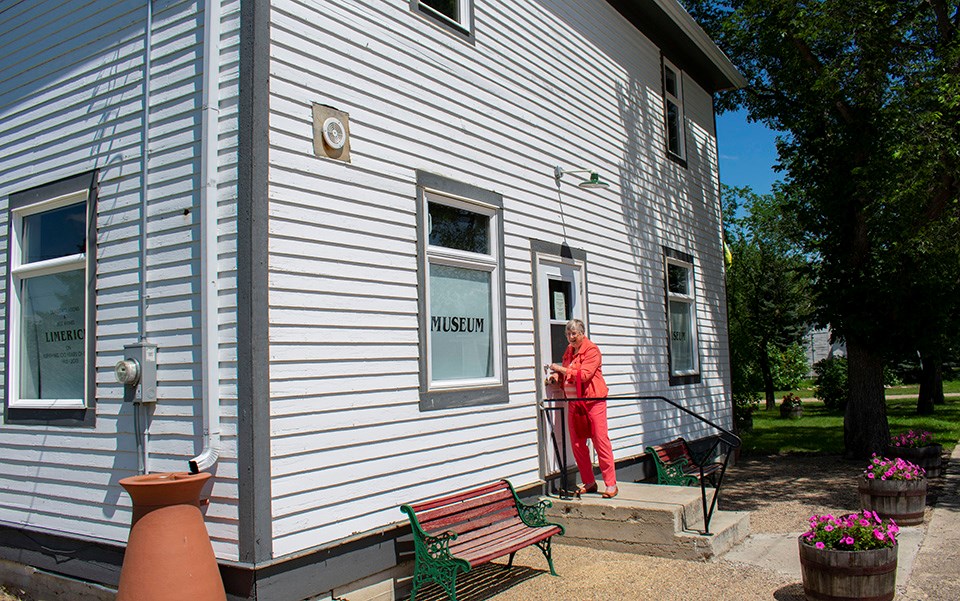Village Council Member Lorelei Rogers once thought Limerick was dead after returning there from Calgary in 1994 with her husband. Yet, although the village’s K-12 school closed in 2007, she said that Limerick has since enjoyed a resurgence in population with several people moving into the area.
Although Limerick’s schools have been closed for several years, the village’s remaining scholastic hub – now known as the Limerick Opportunity Centre – is presently used as a day care, a play school and a fitness centre. Fitness club members have a key to the well-equipped centre with 24/7 access at a cost of $30 per month. The village also has many services, such as a hotel with a pub and restaurant and a grocery store.
“For such a small town, we have all the services,” Rogers said. The Home General, formerly known as the Lucky Dollar, is a small, but well-equipped store catering to the people in the village. “If Dave doesn’t have it, you don’t need it,” Rogers said, quoting the store’s unofficial slogan. She also discussed the village’s post office, which has remained open from Monday to Friday with full services. Canada Post had been planning to cut services at the post office about 3-4 years ago. However, after a motion was made at the Limerick Town Council, a letter was sent to the Crown Corporation, asking for full services to continue at the village’s post office.
Recently, there has been some changes to Limerick’s bylaws to accommodate the newer citizens who’ve moved into the village. In Limerick, you are now allowed to raise up to five chickens in your yard. Homeowners can also keep bees.
Limerick’s namesake originated from the city in the Republic of Ireland. To understand more about the chronicles of Saskatchewan’s Limerick, the village’s museum is a great place to start. The museum is the original RM office built in 1912 and is the oldest building in the village. When a visitor first enters the RM office, they’ll notice the huge paintings on the wall by the Colombian-born artist, German Jaramillo-McKenzie, depicting Limerick’s history from 1910-2000.
The paintings by Jaramillo-McKenzie are based on old photos and were commissioned by Bill Shurniak. Each painting captures a unique period in the village’s history, such as the opulent period of the 1920s. In the 1920s, Limerick experienced a population boom. During the heady times of the 1920s, there were six elevators, seven shops, three lumber yards, three livery stables, two hotels, two banks, a bowling alley, a theatre and many other businesses in Limerick. Limerick also had curling and skating rinks, a brick school and three churches – all of these structures and institutions were developed in the 1920s. But although Limerick is much quieter in 2019, the growing village is an attractive place to raise a family. “We’re working hard to make Limerick a nice place to live,” Rogers said.Â




